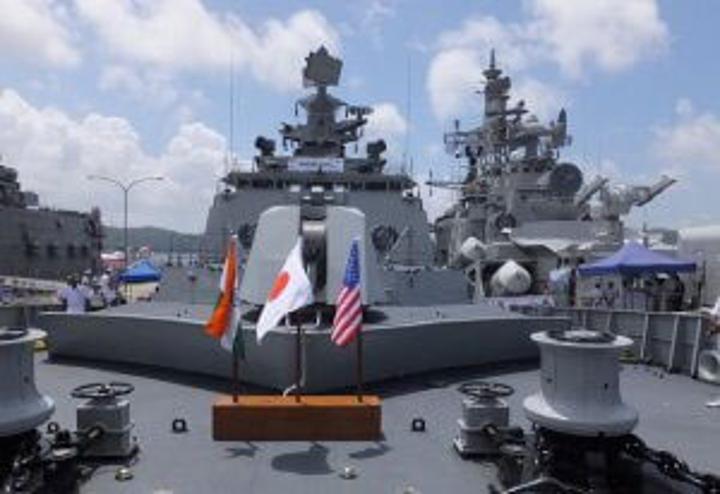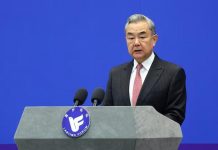Africa-Press – Mauritius. The wider canvas of secure, free maritime travel and trade through the Indian Ocean has witnessed several key events in the past few months which deserve mention, if only as a follow-up on previous contributions in Mauritius Times, including that of TP Saran last week.
They are intricately linked to global competition and rivalries between superpowers, more particularly in the context of China’s legitimate but increasingly aggressive assertion of a global status equivalent to the US and Russia.
The South China sea is the primary region where the Chinese are intent on flexing muscle and establishing an exclusive regional strategic domain by deliberately playing “Big Bully” in their immediate sphere.
They can contend that the US consider the Caribbeans and Latin America as their strategic influence areas while Russia tries hard to do the same with the former East bloc countries.
In the snow-clad Himalayas, and as part of the same immediate vicinity strategy, China tested but ill-guessed India’s resolve on the Doklam plateau, where it had to back down when the latter firmly stared down the Chinese military threat, showing clearly that the Indian Army, Defense and Security forces are not (or no longer) a push-over for hostile bullying “provocateurs”.
It was imperative for India, both as a country facing twin uncomfortable if not hostile neighbours, and as a nationalistic regional player of note, that the message got through to other Asian nations, friend or foe, and to more distant world capitals.
To come back to the naval front, the South China sea constitutes a permanent test of the US resolve to defend the rights of its allies (Japan, Philippines, Taiwan, Vietnam…) and those of the international community for free maritime waterways in that volatile region.
That is and remains the Asia-Pacific conundrum, with artificial Chinese islets, naval projections and displays, eye-ball to eye-ball tense confrontations between the US Pacific Fleet and the Chinese PLA-Navy.
Under the unscripted Trump administration and the unlimited Chinese presidency of Xi Jinping, and with the simultaneous challenges in the Korean peninsula, it is difficult to predict how this situation will resolve and stabilise in a relatively balanced equilibrium.
Managing rivalries for nuclear superpowers in that region seems to imply constant testing but always knowing the confrontational red lines not to cross.
It is the more ambitious “second sphere” of China’s geo-political planning that interests us here in the Indian Ocean, where the bullying philosophy will be strongly contested by other key players being forced into some form of joint collaboration. Below are some of the important recent developments that may matter to us:
The joint statement by the two world leaders “recognize the crucial role that the multi-dimensional India-France strategic partnership will play in ensuring peace, security and stability in, and in bringing robust economic growth and prosperity to the Region.
” The allusions and concerns about Agalega being used for military purposes should be allayed, even if the anti-Indian streak in some local circles will not.
We have a vast expanse of oceanic waters and their potential resources to manage with scarce means, limited aerial surveillance capacity, no structured navy, limited oceanic and under-sea survey capacities and few high-sea patrol frigates or trained personnel.
We face a long ongoing battle with the UK over the recognition of our sovereignty on the excised Chagos-Diego archipelago, which has to be pursued by all means in international fora, even if we have acknowledged that the US base in Diego will remain pivotal to US naval and air forces in protecting and marshalling this increasingly strategic ocean.
The Indian Ocean is an area where competition for vital resources and commodities, import and export trade to Africa and the Middle East, free and secure maritime routes, coincide therefore with military bases, naval presences and strategic projections mostly by the US, France, India and China.
These are considered friendly capitals, in particular France and India, and we have to keep a close tab on their individual naval and geo-political strategies if we want to remain in a position to either avoid blunders or intelligently advance our own national interests.
We trust either at Foreign Affairs or as an extension of the Diego cell operating under the experienced helm of former Cabinet Secretary Seebaluck, there may already be a specialised nucleus dedicated to other Indian Ocean matters.
Otherwise it seems overdue. Its mandate would be to develop information networks locally and internationally to follow and monitor strategies, operations, competitions, rivalries and shifting alliances of friendly powers in the region.
It might usefully receive and centralise copies of all marine and sub-marine surveys conducted on our behalf, assist the data and monitoring of fish and marine resource exploitation in our Economic Zone.
Obviously it could liaise with other Indian Ocean institutions and associations (COI, IORA) and should keep tab on the various regular venues like the Raisina Dialogue or the Shangri-La Dialogue, where top world planners expose their strategies and orientations as they impact our region.
For More News And Analysis About Mauritius Follow Africa-Press







